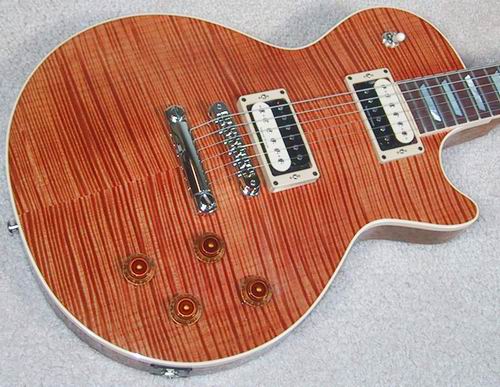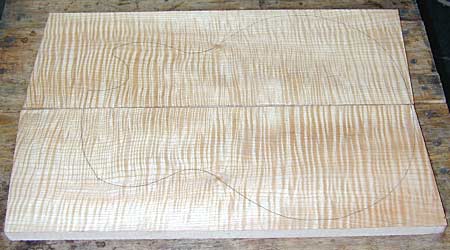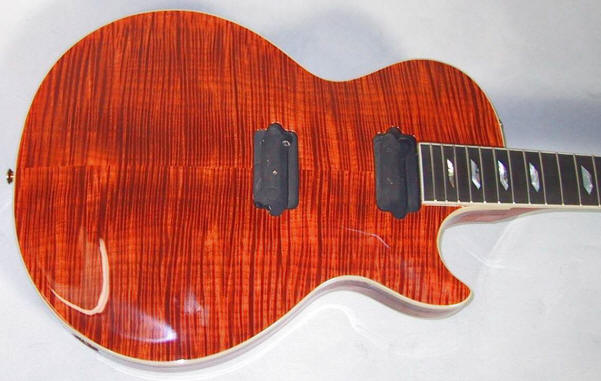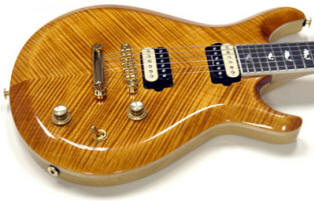
Demonstrating a rare depth & dimensionality, Fiddleback Maple
is one of the world's most-prized hardwoods. The Fiddleback Maple
figuring is occasionally found in other hardwoods, including walnut,
koa, ash and, rarely, other domestic and imported hardwoods.
Fiddleback Maple is also known as 'Flame
Maple', 'Tiger Maple', 'Curly Maple', or 'Tigerstripe Maple'.
Fiddleback Maple exhibits a dramatic change in the individual
stripes or lines. As the incident angle of the light is slightly
altered, the dark stripe becomes a light stripe, and the light
stripe becomes dark. This visual phenomenon is known as 'chatoyancy'
in the gemstone world, and its most dramatic form is seen in catseye
chrysoberyl.
True Fiddleback figuring is not to be confused
with "compression grain" or "stress grain" found where roots merge
into the bole and also on the underside of large limbs. Some
differentiate between Curly and Fiddleback figuring. For instance,
curly cherry and curly birch can exhibit much swirls, waves and
curls, though they are far more irregular and large, often appearing
as flattened arches stacked one on top of another over the length of
the board. Fiddleback Maple (Flame Maple, Tiger Maple) grain is
generally considered to be more pronounced with tighter striping,
sometimes measured as tight as several stripes per inch. Unlike many
forms of curly grain, Fiddleback describes a series of tight,
parallel (or nearly parallel) stripes running perpendicular to the
length of the board.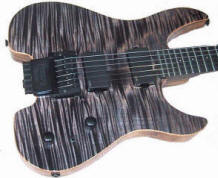
In the United States, most use the terms
Fiddleback Maple and Curly Maple synonymously. Fiddleback Maple
boasts a three-dimensional series of alternately bright and dark
stripes that shade into one another as the wood is slightly moved,
thus producing an illusion of actual waves. Changes in brightness
result from differential light reflection. Relatively high
absorption by exposed fiber ends produces dark bands; reflection and
diffraction from fiber walls cause bright bands. Because the fiber
walls are curved sharply and act as concave or convex reflecting
surfaces, any change in angle of view or incident light makes the
apparent waves seem to shift. Again, the same light stripe
becomes a dark stripe and vice-versa.
The illusion of undulations results from
regular and repeated, parallel, wavy lines that produce an
interference pattern on the exposed plane. Modern botany and science
still cannot adequately account for what exactly causes the
visually-stunning figuring in Fiddleback Maple (also known as Flame
Maple, Curly Maple, Tiger Maple, Tigerstripe Maple). In conclusion,
then, the cause(s) of the rare figuring seen in Fiddleback Maple is
yet unknown. The mystery of Fiddleback Maple, in spite of electron
microscopes and huge advances in the fields of wood technology,
plant genetics, etc., for now remains unrevealed.
While the precise cause of the Mystery of
Fiddleback Maple must remain, at present, unknown, the result is
well-known, greatly esteemed, and eagerly sought by wood aficionados
as Fiddleback Maple- one of the world's most transfixingly beautiful
exotic hardwoods. |



